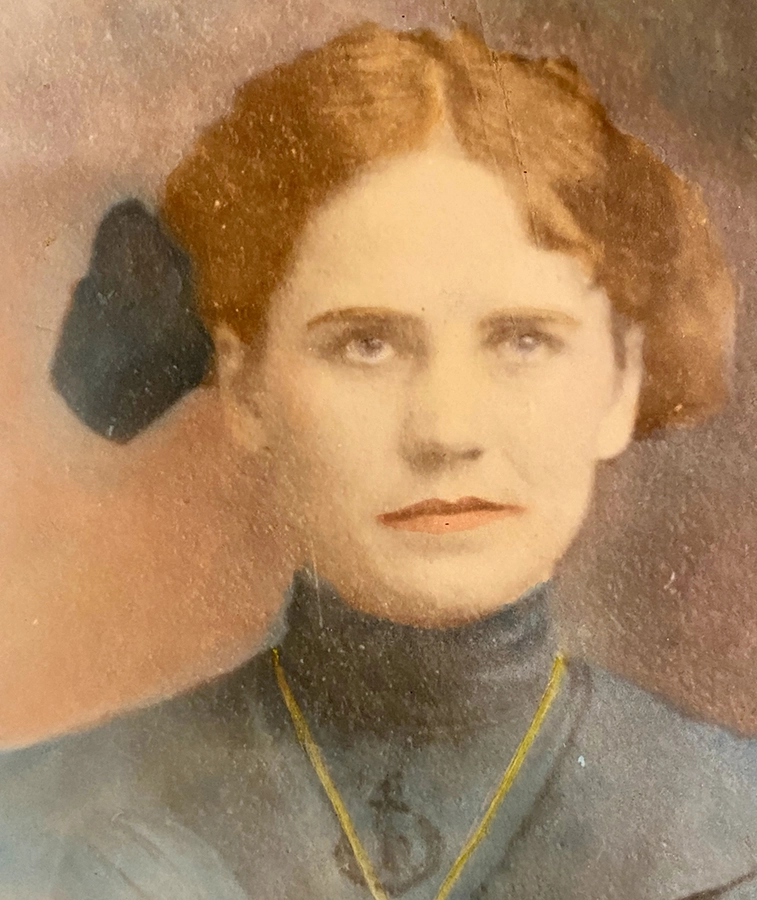My grandmother died when my mother was five years old, leaving behind five children, a husband and a sister. When my mother died last April at the age of 91, I discovered some letters while cleaning out her personal papers. Neither my brother nor I knew the letters existed, my mom had never talked about them, but they provided insight into my grandmother that we had never had before. While reading through the notes, I was struck by the similarities to people with COVID-19. In fact, anyone with an infection or highly contagious disease who was forced into isolation and became dependent on caregivers. This is something that my mother also struggled with in assisted living.
Sadie’s Story
My grandmother, Sadie, married my grandfather at the age of 24, and together they raised their children on a farm in southeast Kansas. When she was 41, she was diagnosed with tuberculosis and sent to one of two sanitoriums in Kansas, which was 390 miles away from her home in Erie. During her 11-month stay there, she only had one visit from my grandfather. The rest of the time, she stayed in touch by writing to the family about her day-to-day activities in the sanitorium.
“Salvation Army comes over and sings to us Thursday morn. I coughed all night last night, feel tough this morn—my throat is a little better though. It is awful what I spit up. The doctor said my system was so full of poison that it would be quite a while before I was better.” — excerpt from Letters from Sadie.
Other times she would also ask about the farm and the family. Her sister moved in with the family to help raise the children who ranged in age from 4 to 14.
“Ree are you are going to raise chickens in a big way? Hope you have good luck. How many cows are you milking, about 16 or 17?”
“Are you all just getting along fine at school? It sure sounds good when you are making 100 in spelling. I hope you boys all get good grades and all pass.”
As the family struggled with the impacts of the Great Depression, Sadie struggled with her isolation, similar to what many people are feeling today in the midst of the COVID-19 pandemic.
“The girl that they moved upstairs from this wing died. I saw her and talked to her the day before she died. I guess I will quit for this time. I want you all to write as I get so lonesome.”
Until the very end, they continued to give Sadie hope that she was improving or that she could improve. But my grandmother knew they were lying to her, and she wrote home about it. These letters were particularly hard to read because she talks about wanting to come home for the last year of her life. In her final letter, she says that she is sure she is near the end. It is truly heartbreaking.
“My Dear ones at Home. Will try and write you a few lines to let you know I am not any better but am lots worse. Kids, I have a little bad news for you. The doctor says I haven’t but a short time to live. I have T.B. in my kidneys and you never heard tell of such suffering… Now Cordus, I don’t want you to worry about me. Just be a good daddy to my children and be good to them and Ree and all of you be happy while you are together.”
Norton Sanitorium’s History
Tuberculosis was greatly feared in 1932 when my grandmother was admitted. It was also not very well understood. There was no defined treatment path during her time at Norton Sanitorium. At the beginning, doctors wanted Saide to stay in bed all day. A few months later, she could walk wherever she wanted and was encouraged to spend a lot of time outside as they believed that fresh air was key to successful treatment.
Of the 642 patients, 622 were white and 20 were Black; 274 were male, and 368 were female. The average patient age was 26 years and eight months and the average length of stay was about eleven months. While Sadie resided there, the sanitorium reported 65 deaths.
Money mattered when seeking treatment for tuberculosis. Norton Sanitorium charged each patient about a dollar a day, a price that would be paid by the county if it couldn’t be paid by the patient or their family. In Sadie's letters, she expresses some worry about these charges and frequently encouraged her husband to pay her life insurance and to keep it up to date. When doing some research, I found that life insurance policies in 1933 in Kansas for a poor farmer would be around $0.05 a month.
You can learn more about Tuberculosis and hear other stories of its impact at Lung.org/tuberculosis.
Excerpts are taken directly from “Letters from Sadie,” by Darla Hedrick Quinn, which will be available soon in both softcover and electronic formats. You may reserve a copy by emailing the author at [email protected], or look for it on your favorite retail websites.
Blog last updated: August 27, 2023




